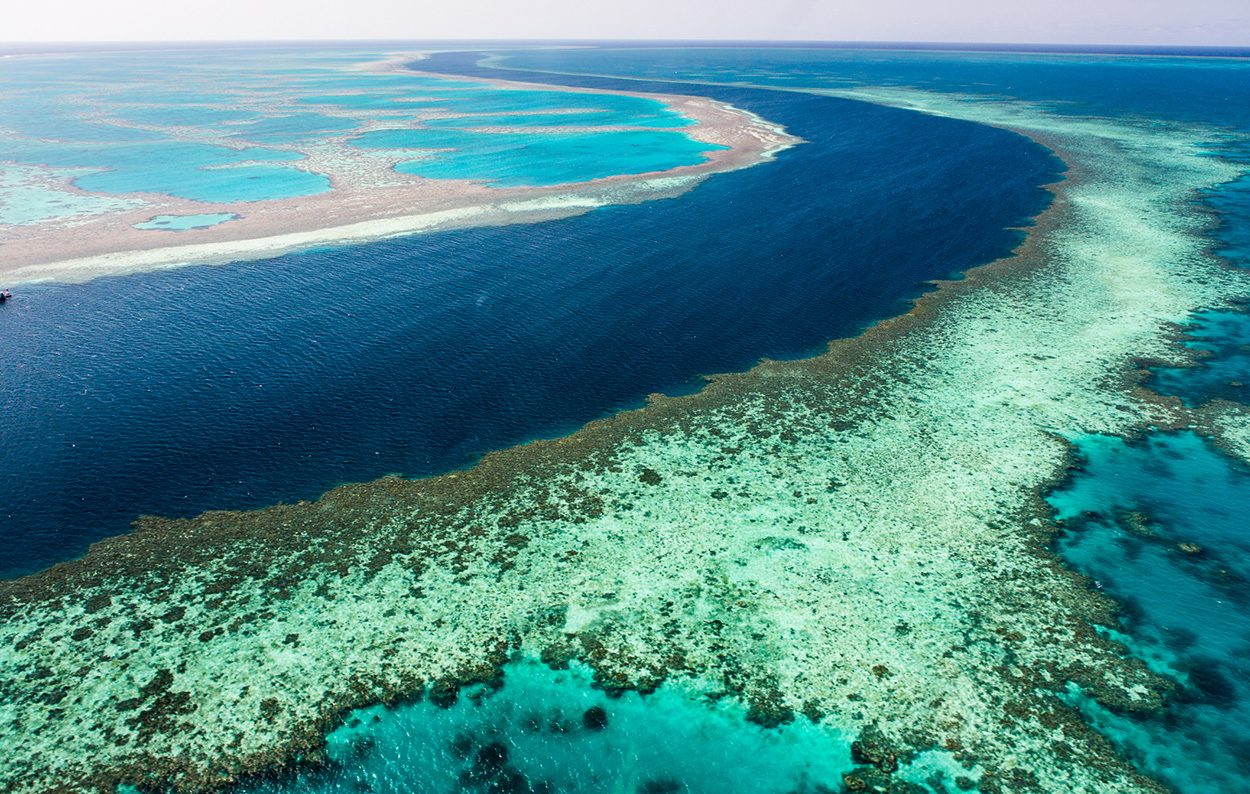The Great Barrier Reef in Australia is the largest coral reef on Earth. But it was not yet clear when and how it arose. Perhaps now scientists have clarified this question. Accordingly, the formation of the reef was probably closely related to the formation of Fraser Island, a prominent hook-shaped sandy island off the east coast of Australia. Dating reveals that this island was formed 1.2 to 0.7 million years ago as a result of sea level fluctuations and changing sediment flows. This in turn created a barrier that kept the sea area north of the island free of new alluvial sand – thus making it possible for the reefs to settle.
The Great Barrier Reef off the east coast of Australia stretches over 2,300 km in length and is therefore the largest of any other reef area on Earth. Because of the unique biodiversity and beauty of the coral reef landscape, it is a UNESCO World Heritage Site. But despite the Great Barrier Reef’s fame, its origins remain a mystery. “Coral reef formation and the mechanism responsible for it have not been elucidated,” wrote Daniel Ellerton of Stockholm University and colleagues. One reason for this is inconsistencies in the likely time of formation: the geological conditions of the reefs existed off eastern Australia about 25 million years ago. By that time, Australia had moved far enough north and the warm water temperatures needed for tropical reefs had been around for about five million years at the latest. Despite this, the dating of samples of the corals indicates that they formed much later, that is, about 450 thousand years ago.
Focus on moving sand
To illustrate this discrepancy, Ellerton and his team investigated another possible prerequisite for coral formation: sandy transport on the Australian shelf. Because if a lot of sand is washed over and over again, this disturbs the stability of the reef and prevents the formation of new corals. So scientists investigated the role that the formation of Fraser Island, the world’s largest sand island, played in transporting sand in the Great Barrier Reef. This prominent hook-shaped island off the coast of eastern Australia is part of a vast area of sand and dunes in southeast Queensland and part of the largest placer deposit on Earth. According to the researchers, the prevailing ocean currents move about 500,000 cubic meters of sand annually.
Most of the sand washed up on the east coast of Australia is shipped north. However, on the eastern side of the prominent Fraser Island, this alluvial sand is diverted offshore and carried to the edge of the shelf. This makes the island act as a sort of screen that keeps most of the alluvial sand away from the Great Barrier Reef in the north. “The formation of Fraser Island prevented further transfer of sand on the northern coast—and thus to the area where the Great Barrier Reef is now located,” explains co-author Tammy Ritnor of Utah State University.
To find out how long Fraser Island has existed, she and her colleagues took sediment samples from the island and dated them using the optically stimulated luminescence (OSL) method. This method allows you to determine when a grain of sand was last exposed to light. In this case it shows when the sand has been washed and accumulated.
The formation of the island paved the way for coral reefs
“We found that sandy islands and dune fields began to form 1.2 to 0.7 million years ago,” says the research team. At that time, the Earth was going through a period of changing climatic conditions, with the growth and contraction of glaciers in the early Ice Ages causing sea levels to fluctuate sharply. These fluctuations have also affected ocean currents and sand transport off the coast of eastern Australia. “Sea-level fluctuations have caused a redistribution of sediments on the continental shelf,” explains Rittnor. As a result, increasing masses of sediment accumulated near the coast, which over time formed Fraser Island and the surrounding sandbars and dunes.
According to scientists, this was also the decisive impetus for the formation of the Great Barrier Reef. Because of this newly formed barrier, sandy transport to the north has slowed down and the current reef zone has allowed the reefs more favorable conditions for settling. “The formation of Fraser Island was a necessary step in enabling the formation of the southern and central parts of the Great Barrier Reef,” Ellerton and colleagues say. This could also explain why these reefs formed much later than would have been possible from a purely geological and climatic point of view. “These important findings change our view of coastal sediment systems,” says Rittnor.
Source: Daniel Ellerton (Stockholm University) et al., Nature Geoscience, doi: 10.1038/s41561-022-01062-6

“Alcohol buff. Troublemaker. Introvert. Student. Social media lover. Web ninja. Bacon fan. Reader.”





More Stories
Huge radiation explosion from a magnetar – forschung.de
Principles and features of the folk nutritional principle
Science: The percentage of women in mint topics rises to a third